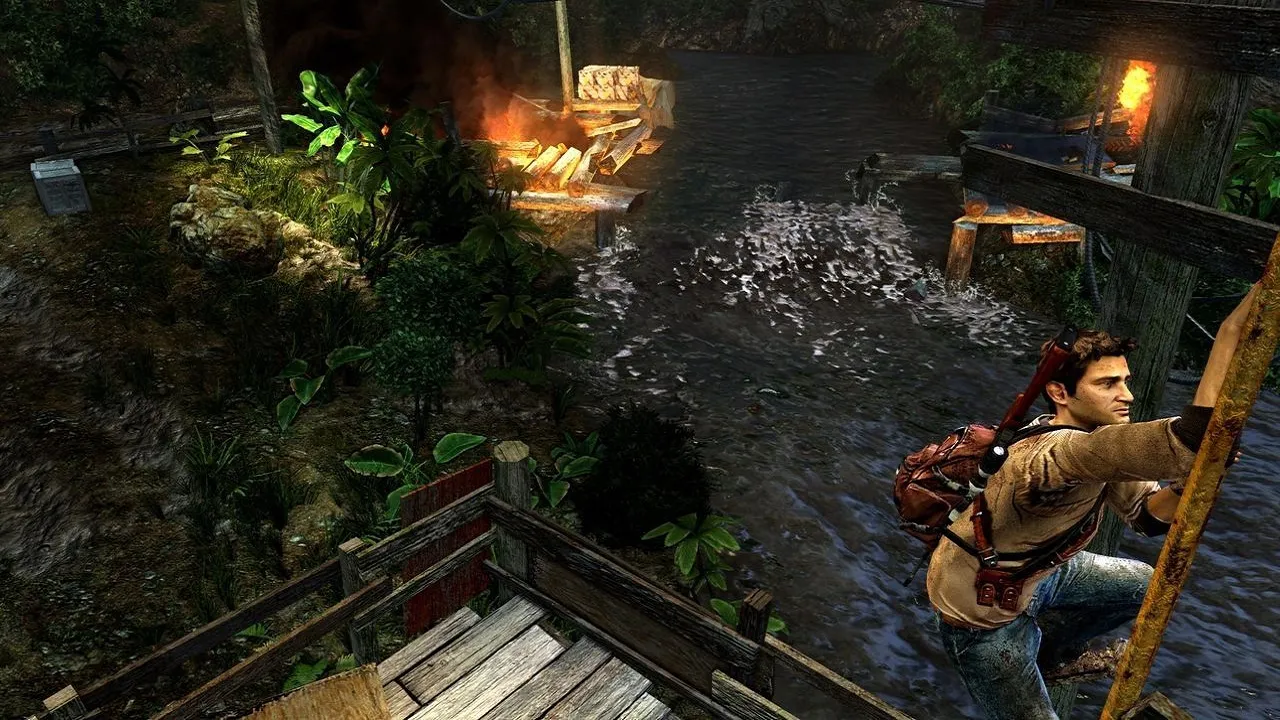
Uncharted: Golden Abyss – A PS Vita Treasure Hunt
Contents
When Sony launched the PlayStation Vita in 2012, they needed a flagship title to showcase the handheld’s capabilities. What better choice than Uncharted, a franchise already making waves on the PlayStation 3? Sony Bend Studio took on the challenge, and Uncharted: Golden Abyss was born.
 Nathan Drake aiming his gun in Uncharted: Golden Abyss
Nathan Drake aiming his gun in Uncharted: Golden Abyss
Uncharted: Golden Abyss is a prequel to the original Uncharted: Drake’s Fortune. Players once again join Nathan Drake, the adventurous treasure hunter, as he explores the mystery of a lost city of gold in the New World.
The game features familiar tropes: a wisecracking sidekick, a menacing warlord, and a captivating woman with a complex past and hidden secrets. It’s a classic adventure story, and Golden Abyss delivers a well-crafted narrative with cinematic twists and turns, a hallmark of the Uncharted series. However, the historical and archaeological details can be complex and challenging to follow, even for those proficient in English.
Harnessing the Power of the PS Vita
Uncharted: Golden Abyss was designed to showcase the PS Vita’s features, and it does so admirably. The game utilizes the touchscreen for direct interaction with objects, allowing players to pick up weapons, engage in melee combat, perform stealth kills, climb ropes, traverse cliffs, assemble puzzle pieces, and solve riddles. The Vita’s motion sensors are also integrated, allowing players to swing across gaps or maintain balance by tilting the device.
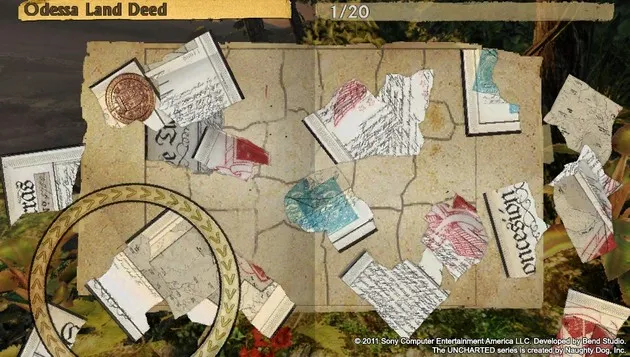 Drake examining a clue in Uncharted: Golden Abyss
Drake examining a clue in Uncharted: Golden Abyss
Remarkably, almost all of these actions can also be performed using traditional button controls, offering players a choice in how they interact with the game world. This diverse control scheme provides a unique and engaging experience.
One particularly memorable puzzle involves using the Vita’s rear camera. Players must shine a real-world light source onto the Vita’s screen to reveal hidden content on a piece of paper within the game. This clever integration of real-world elements enhances the immersion and adds a layer of realism to the gameplay. Bend Studio deserves praise for its innovative approach.
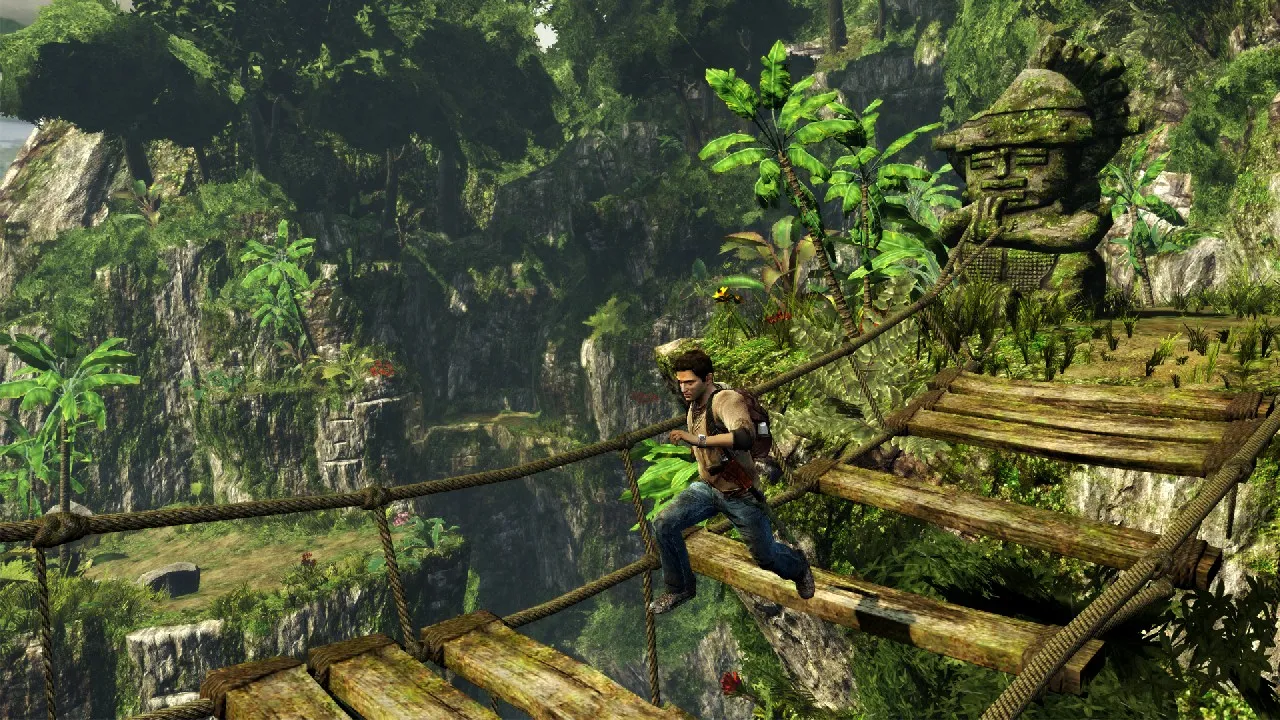 Drake climbing a cliff in Uncharted: Golden Abyss
Drake climbing a cliff in Uncharted: Golden Abyss
A Treasure Trove of Discoveries
True to its treasure-hunting theme, Uncharted: Golden Abyss is packed with hidden secrets and collectibles. From the very first level to the last, players are encouraged to explore every nook and cranny. The sheer abundance of hidden items evokes a sense of discovery reminiscent of classic Tomb Raider games. The reward for this diligent exploration is the satisfaction of completing collections and earning numerous trophies to share with friends.
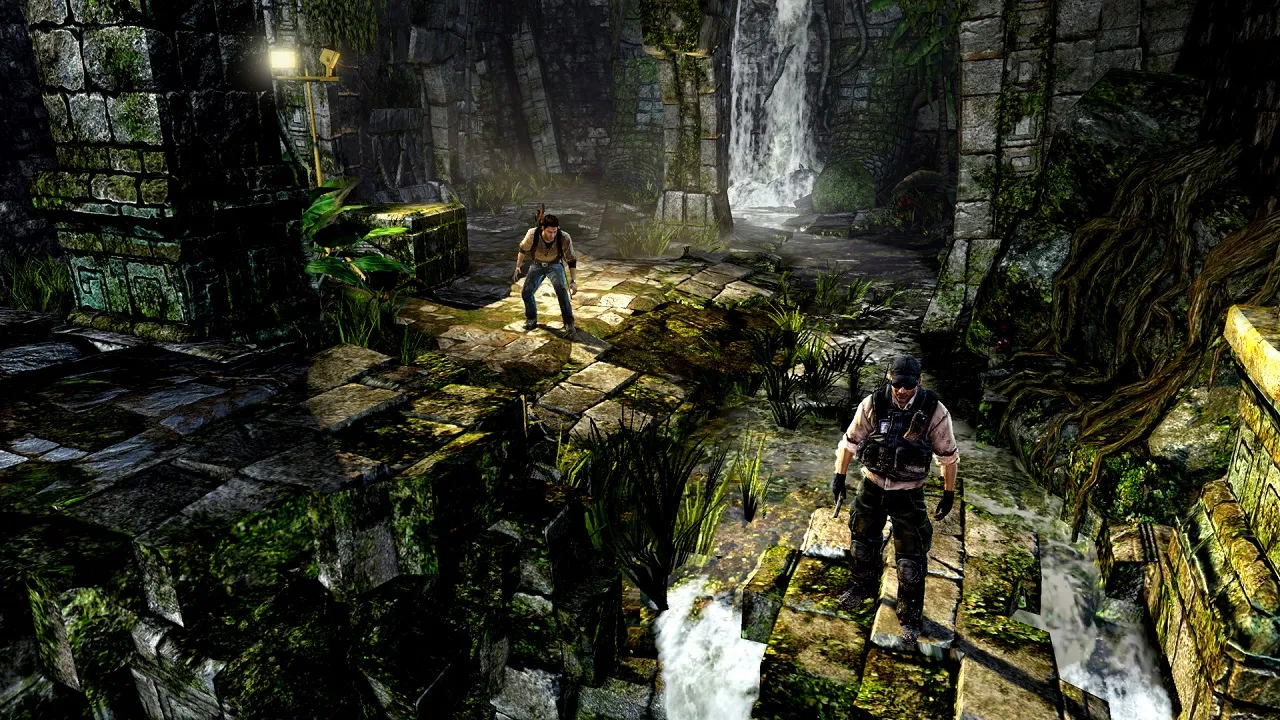 Drake exploring a jungle environment in Uncharted: Golden Abyss
Drake exploring a jungle environment in Uncharted: Golden Abyss
Console-Quality on the Go
Despite some graphical shortcomings (discussed later), Uncharted: Golden Abyss brings a console-quality experience to the handheld. Lush jungle environments and ancient ruins are visually impressive and reminiscent of the PS3 entries in the series. The game also boasts excellent voice acting, expressive character animations, and captivating cutscenes, all contributing to a memorable experience.
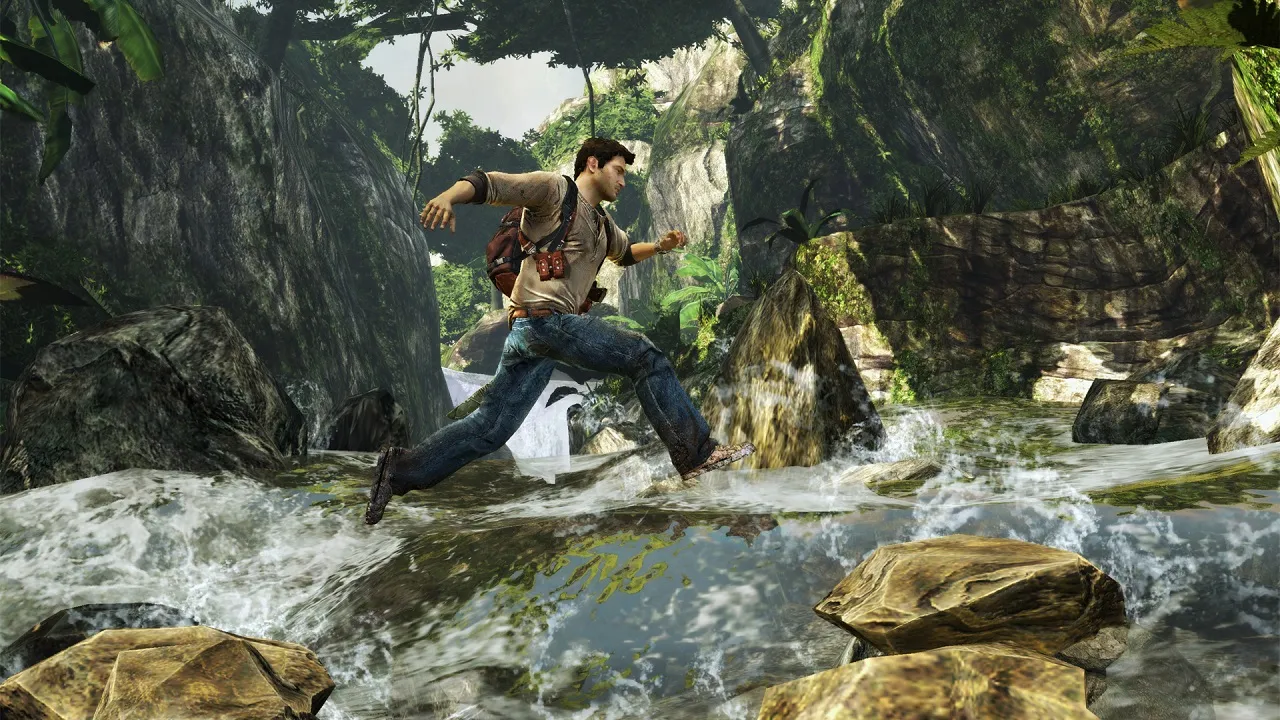 Drake in a firefight in Uncharted: Golden Abyss
Drake in a firefight in Uncharted: Golden Abyss
Challenges and Shortcomings
While Golden Abyss strives for a console-like experience, the Vita’s hardware limitations are evident. Levels are generally simpler and more segmented than those found in the PS3 games. The absence of elaborate cinematic set pieces is a noticeable drawback, resulting in a less dynamic pacing. Combat encounters are also less frequent and lack the intensity of boss battles found in other Uncharted titles. The lack of a multiplayer mode is another disappointment, likely due to time constraints during development.
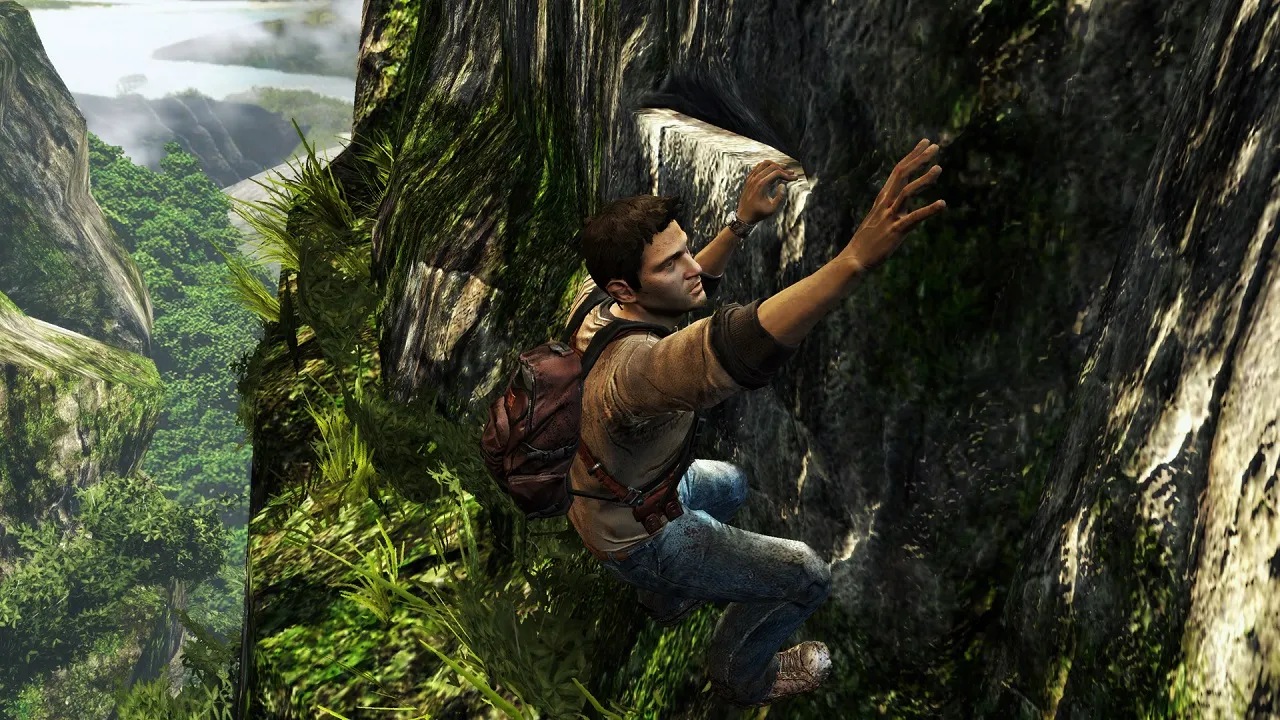 Drake in a tense standoff in Uncharted: Golden Abyss
Drake in a tense standoff in Uncharted: Golden Abyss
Frustrating Firefights
Unfortunately, one of the core gameplay elements, gunplay, proves to be the most frustrating. The inconsistent frame rate, imprecise analog stick controls, and unreliable shoulder buttons hinder the shooting experience. While playable, combat encounters in Golden Abyss often feel cumbersome. The inclusion of an auto-aim feature, similar to that found in Red Dead Redemption, would have greatly improved the gunplay.
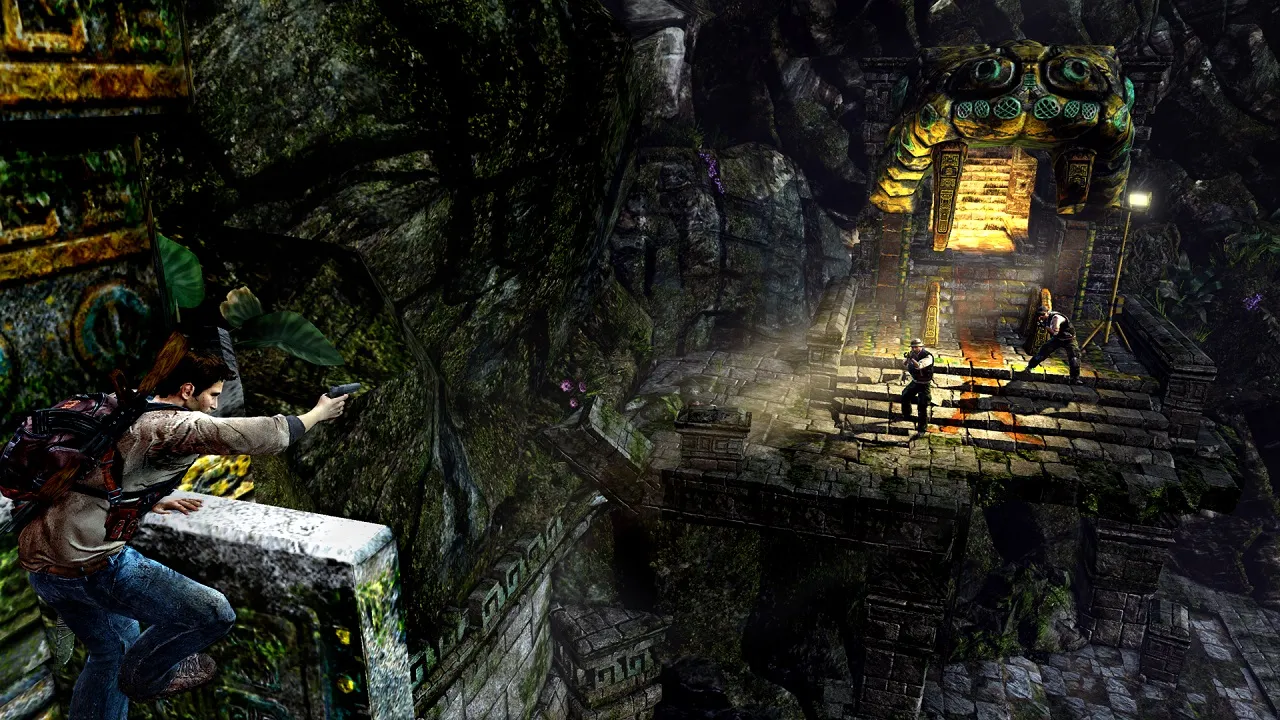 Drake examining an artifact in Uncharted: Golden Abyss
Drake examining an artifact in Uncharted: Golden Abyss
Graphical Glitches and Control Quirks
While the outdoor environments are visually appealing, the indoor areas and special effects, such as fire, appear rough and underwhelming. The most significant graphical issue is the prevalence of jagged edges, affecting both 3D environments and in-game documents. This can be distracting, especially for those playing on a smaller screen or holding the device closer.
The diverse control scheme, while offering flexibility, can also be overwhelming. Players may struggle to switch weapons or perform specific actions due to the multitude of control options.
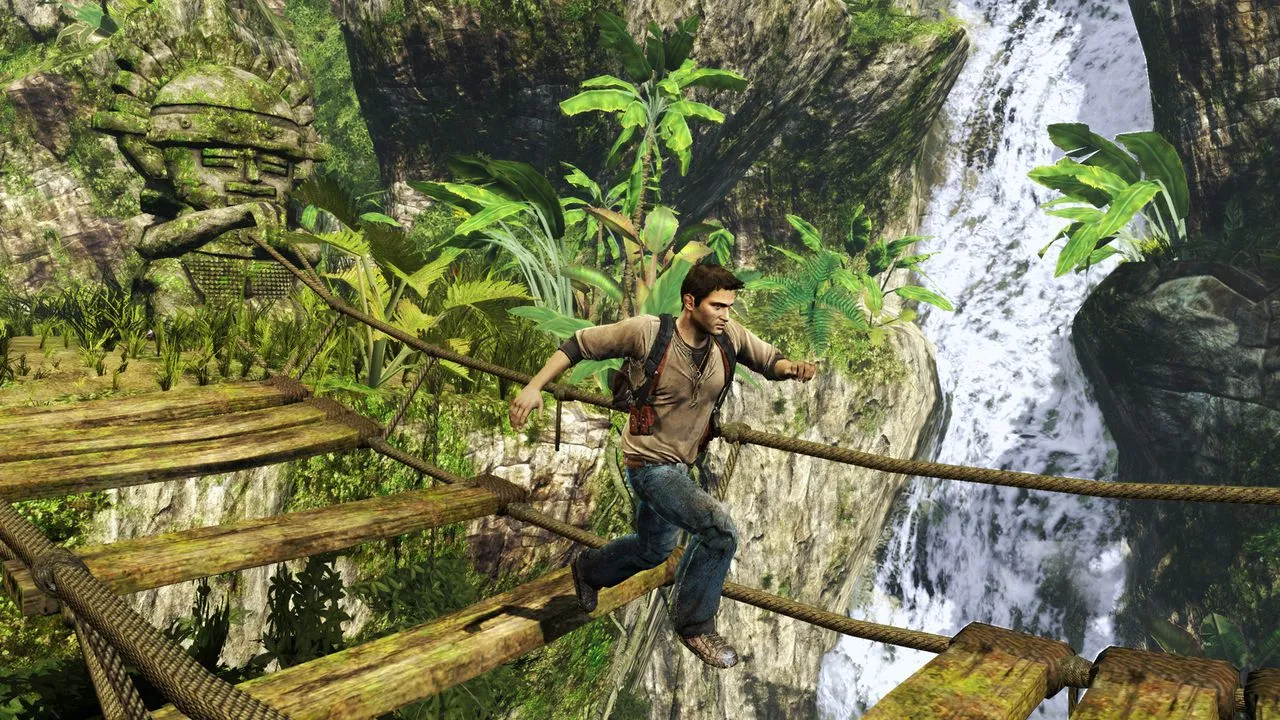 Example of jagged edges in Uncharted: Golden Abyss
Example of jagged edges in Uncharted: Golden Abyss
Conclusion
Uncharted: Golden Abyss is a commendable effort to bring the Uncharted experience to the PS Vita. While it successfully showcases the handheld’s unique features and delivers a compelling narrative, it also suffers from technical limitations and gameplay shortcomings. Despite its flaws, Golden Abyss remains a worthwhile adventure for fans of the series and a testament to the potential of handheld gaming.





Comments (0)